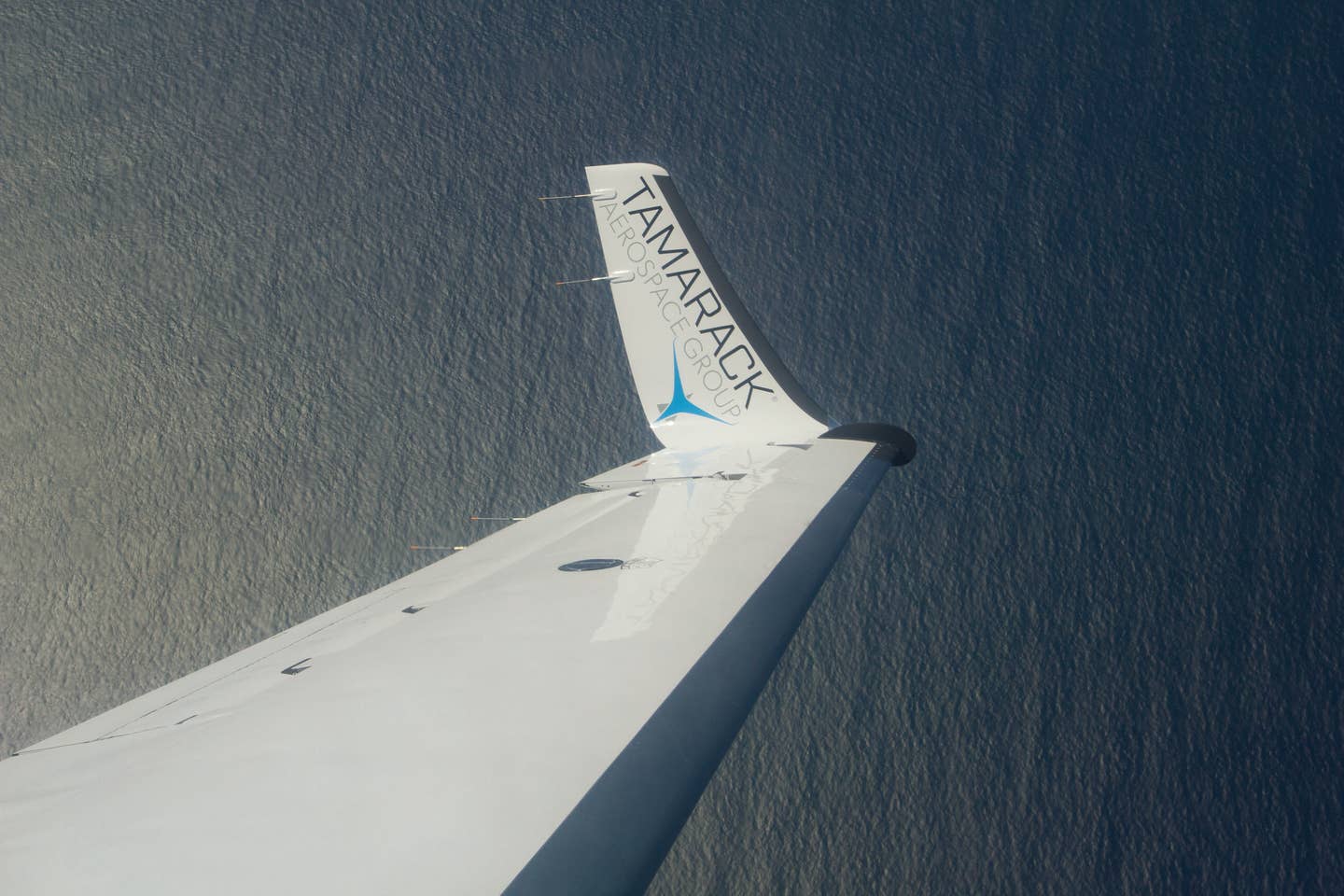
Tamarack’s active wingtip extension and winglet system include TACS, small tabs that move to alleviate stress on the wing in high-load conditions. The performance improvements are dramatic. Tamarack
Tamarack Aerospace is in the final stages of FAA certification for the first commercially viable installation of its Active Technology Load Alleviation System (ATLAS), which allows wingtip extensions with winglets to be installed without increasing the load on the wing. The installation includes Tamarack Active Camber Surfaces (TACS) on the outboard portions of the trailing edges of the wings. The TACS automatically activate when additional load is put on the wing, such as during turbulence or maneuvers that increase G-load. The first STC for the system will go to the Cessna Citation 525 series: the CJ, CJ1, CJ1+ and M2. The system is already certified in Europe and is available for installation there.
We had a chance to test out the system on the Citation CJ that has been used for the certification effort. The performance improvements are simply mind-blowing.
Before takeoff, Tamarack’s founder and CEO Nick Guida opened up the Citation’s performance software, CPCalc, to show me what would be expected in an unmodified airplane for the conditions on that day. It was the typical sunny Southern California day, with a temperature on the ground of 28 degrees C. CPCalc told us it would take one hour and 54 minutes to climb to FL 410, an altitude most CJ pilots are unfamiliar with, says former Cessna chief pilot Kirby Ortega. Eleven minutes after takeoff from sea level, we leveled off briefly at FL 230, then continued our climb. We made it to 41,000 feet in just 34 minutes.
Performance Domino Effect
Because the airplane with Tamarack’s winglets can get to altitude much more quickly, the fuel burn decreases significantly, which in turn leads to a reduction in the required fuel load. As a result, the payload capabilities increase as well. Through extensive flight testing, Tamarack has realized a 15 to 25 percent decrease in fuel burn. After two solid hours of flying, which included the climb to FL 410, we had burned a total of 1,200 pounds of fuel. Guida once set a record when he flew the CJ for six hours and 16 minutes, covering 1,853 nm. Another benefit, says Guida, is an increase in the service life of the airplane as the stresses on the airframe are reduced.
The system also improves the lateral stability up high. Guida told me to push a rudder pedal and release to see how the airplane would respond. It oscillated back and forth six or seven times before settling back into stable, straight flight.
The initial cost for the installation through Cessna’s Citation Service Centers is $239,900. Tamarack has had discussions with other OEMs about offering ATLAS.

Sign-up for newsletters & special offers!
Get the latest FLYING stories & special offers delivered directly to your inbox






